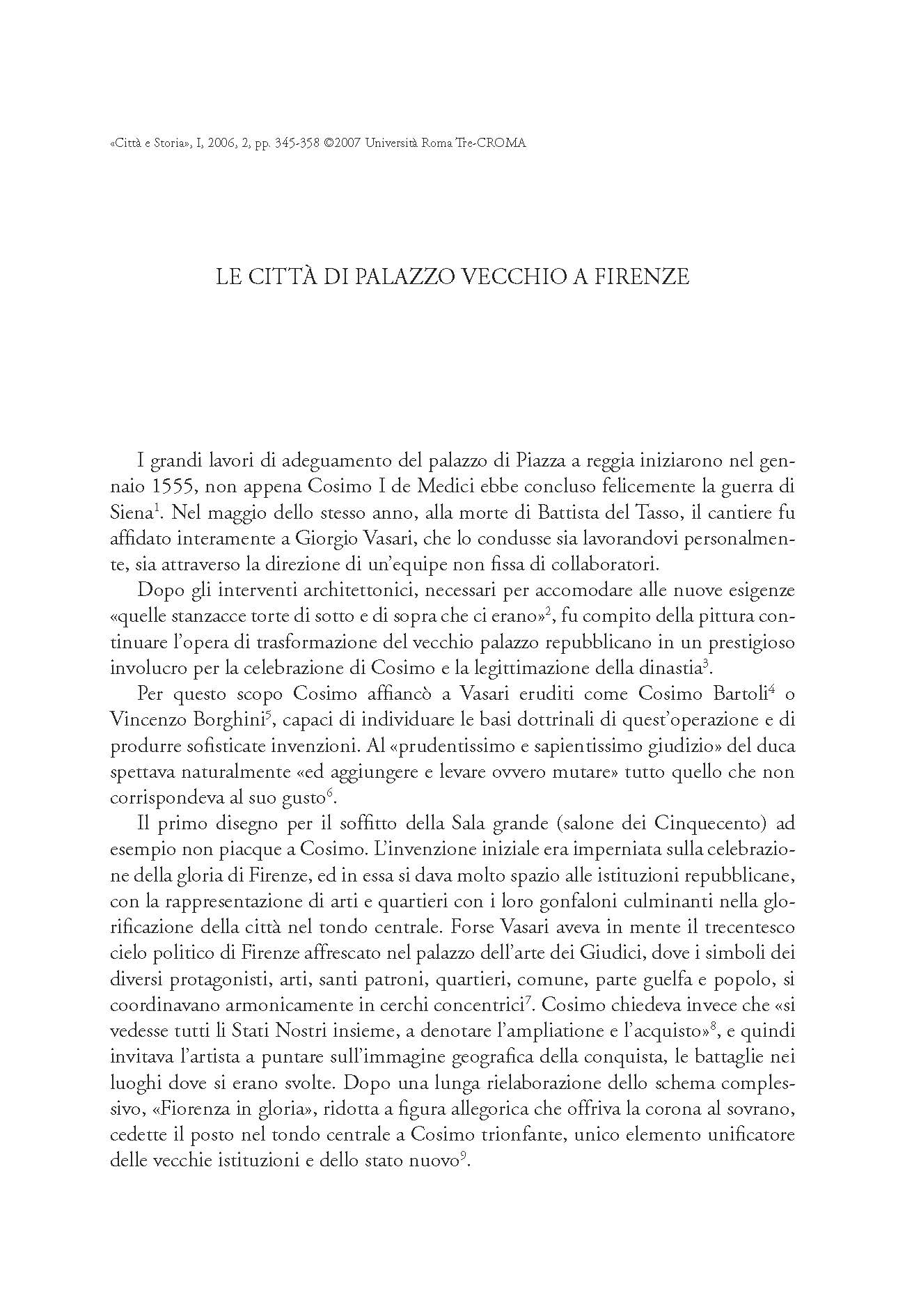Le città di Palazzo Vecchio a Firenze
6,00 €
The essay analyzes the views of cities as they appear in the cycle of frescos in Palazzo Vecchio in Florence after its restoration ordered by Cosimo I de Medici in 1555. These murals comprise two very distinct cycles. The first is in the rooms of the ducal apartments and the great hall where the audiences were held. In these frescos Cosimo wished to depict the undertakings of the Medici dynasty and the history of the battles in Tuscan territory that had led to the domain’s conquest. The second cycle is located in the first courtyard which underwent restoration for the wedding of his son Francesco I with Johanna of Austria. For this reason, in addition to those images relating to the Medicean hagiography, there are others depicting cities of the Habsburg Empire. The frescos in both cycles were original, commissioned expressly for the occasion. Precise instructions were given to the Italian and foreign draughtsmen who were sent to specific locations and whose renditions were then incorporated in the frescos by Vasari’s collaborators.
The essay analyzes the views of cities as they appear in the cycle of frescos in Palazzo Vecchio in Florence after its restoration ordered by Cosimo I de Medici in 1555. These murals comprise two very distinct cycles. The first is in the rooms of the ducal apartments and the great hall where the audiences were held. In these frescos Cosimo wished to depict the undertakings of the Medici dynasty and the history of the battles in Tuscan territory that had led to the domain’s conquest. The second cycle is located in the first courtyard which underwent restoration for the wedding of his son Francesco I with Johanna of Austria. For this reason, in addition to those images relating to the Medicean hagiography, there are others depicting cities of the Habsburg Empire. The frescos in both cycles were original, commissioned expressly for the occasion. Precise instructions were given to the Italian and foreign draughtsmen who were sent to specific locations and whose renditions were then incorporated in the frescos by Vasari’s collaborators.

